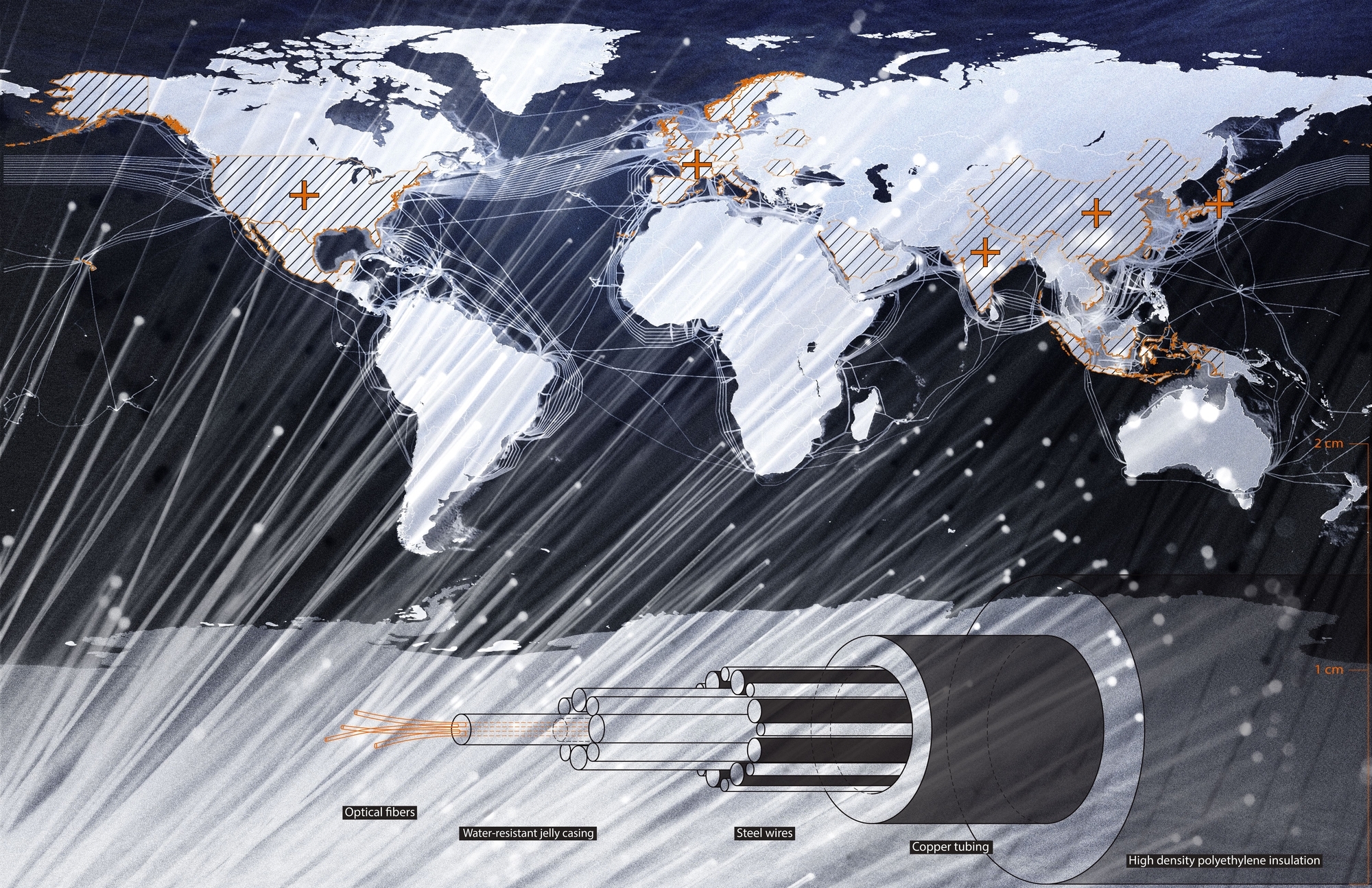Any day now, our cities will be marvelously transformed into efficient machines. But it’s not so easy to see where you and I fit in. Most discourse on “smart” and “sentient” cities, if it addresses people at all, focuses on them as sources of data feeding the algorithms. Rarely do we consider the point of engagement —how people interface with, and experience, the city’s operating system.
Wireless internet is a misnomer. The ubiquity of Wifi in many urban areas has helped obscure the physical infrastructures of the internet. Yet, despite recent plans to provide internet from satellites and further divorce the service from its source, millions of feet of cable and wiring still course through the planet. They rest alongside and beneath roads, across the seafloor, meander to downtown and rural data centers, and feed directly to your modem, sending signals at the speed of light with each loaded page and downloaded file. Writing in Wirelessness: Radical Empiricism in Network Cultures, Sociologist Adrian Mackenzie describes the internet as a “rewiring of the city”, one that, in many cases, rests upon older communication infrastructure.

The Internet is a physical thing, with billions of feet of fiber optics connecting modems, data centers, and banking infrastructure together. Foregrounding the material components of these devices, points to the ways in which equitable access can be achieved throughout the world. Internet infrastructure, while still being developed and deployed, represents a global infrastructural project that has rapidly altered both our physical environment and social lives.
Nearly a half-century after the term Internet was coined in 1974 as a shorthand for internetworking, 65.9% of people across the globe have some degree of access to it.
Conversely, these reports do not reveal the quality of internet access provided, glossing over the disparity between countries, regions, and urban and rural citizens' access to high quality broadband at home. While nation-wide statistics point to the dominance of Western nations, the landscape of internet access within nations is also highly uneven. Take the US for example: nearly 14 million people are not internet users and 24 million people do not have broadband internet access at home.
With each further compression of time and space through communications technologies, there's a lot of hopeful zeal that this will be society's turning point...But that hopeful promise associated with an expanding Internet depends on equal access to it.
Determining access to the internet is complicated further by the invisibility and illegibility of physical infrastructure. It is much harder to follow an underground wire than a telephone wire. As Shannon Mattern has noted, recent multi-media work conducted on making invisible infrastructural networks legible have the ability to encourage new ways of seeing existing and previously unseen infrastructure.


